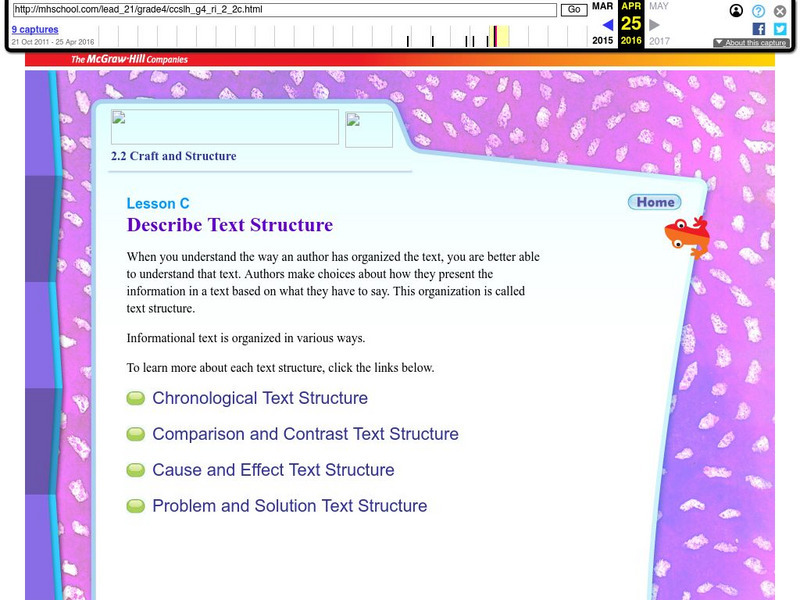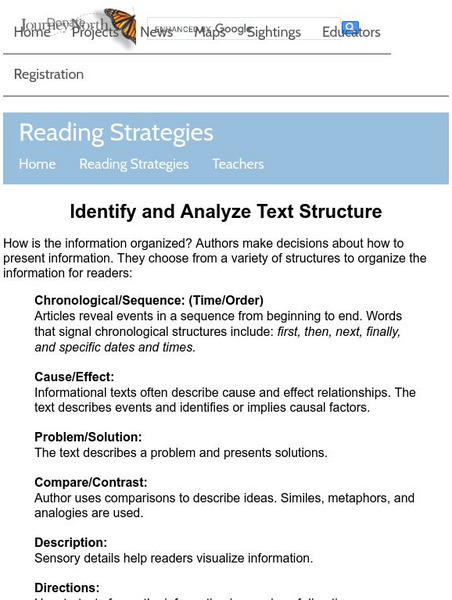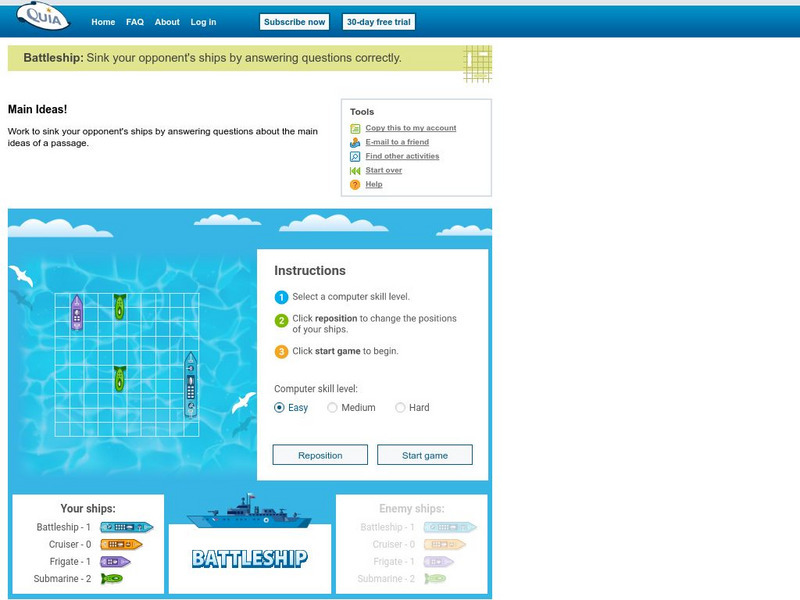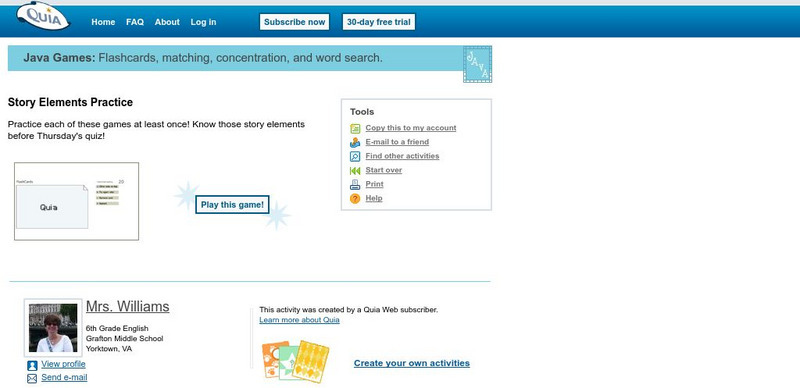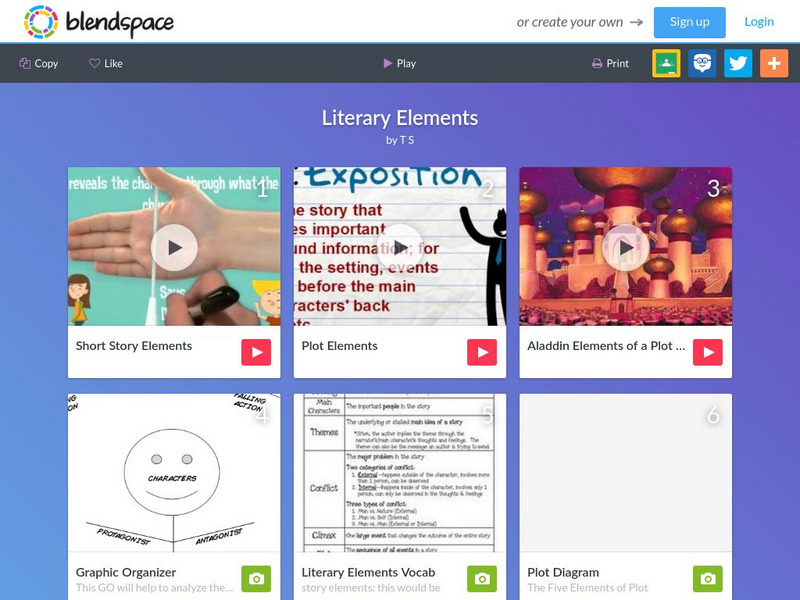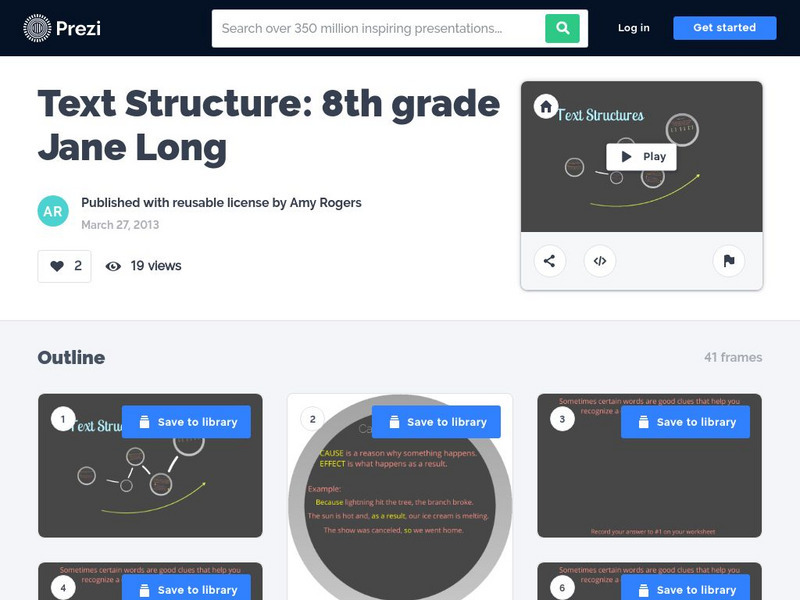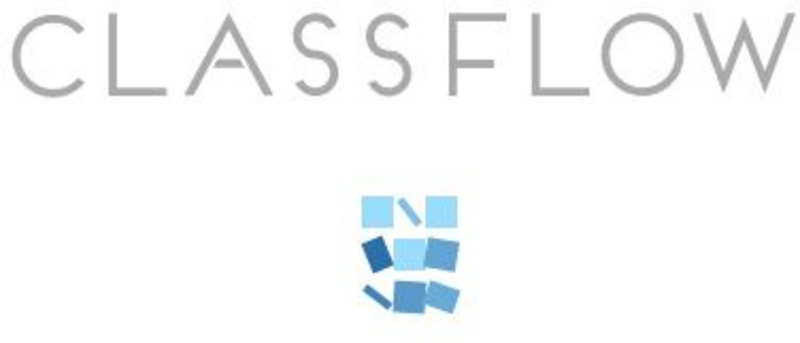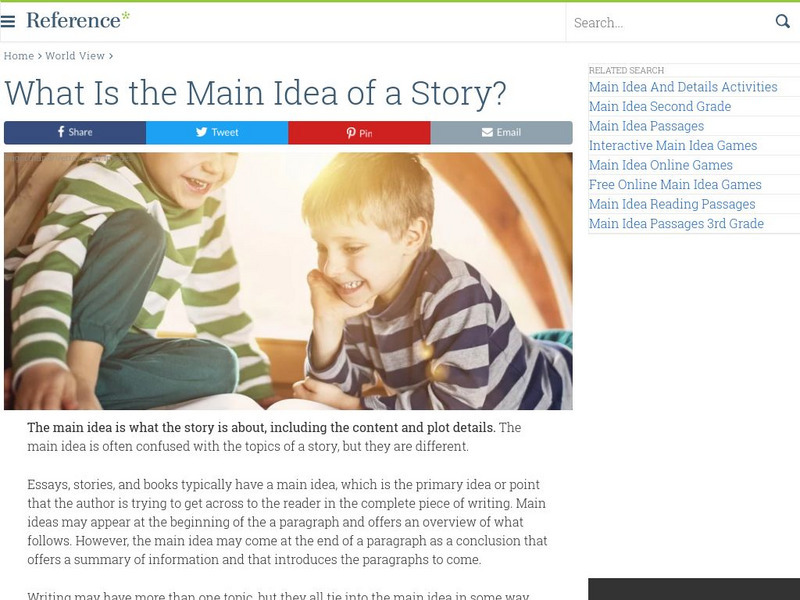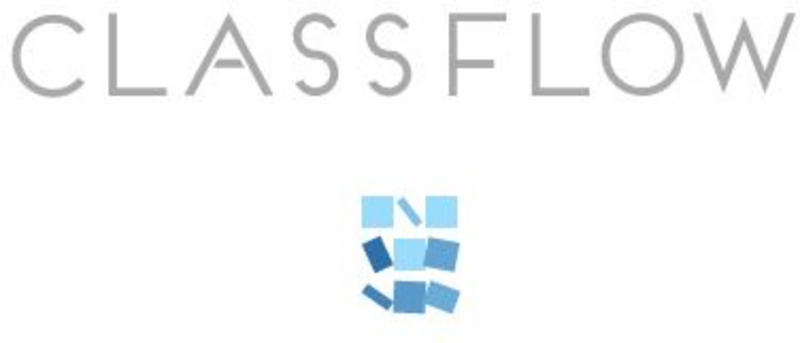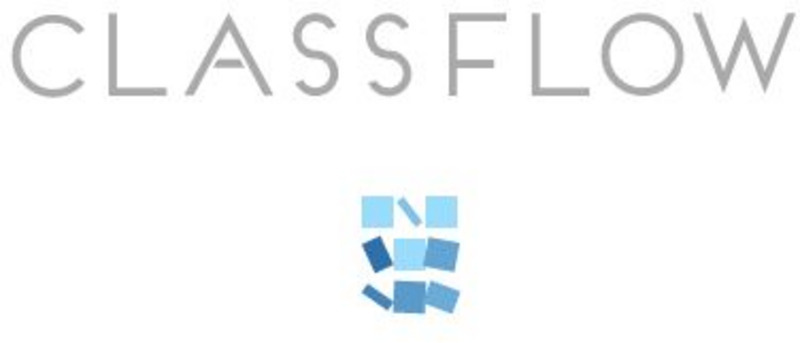CPALMS
Cpalms: Lafs.7.ri.1.3
This site provides explanation of the Florida English Language Arts Standard: Analyze the interactions between individuals, events, and ideas in a text (e.g., how ideas influence individuals or events, or how individuals influence ideas...
Louisiana Department of Education
Louisiana Doe: Curriculum Hub: Ela Guidebooks: A Lesson Before Dying: Summarize
Read paragraphs one and two from the prologue of Invisible Man together to establish our understanding, and then summarize the text.
Louisiana Department of Education
Louisiana Doe: Louisiana Believes: Creating Text Sets for Whole Class Instruction
Learn what makes a strong English language arts (ELA) curriculum by creating text sets for the whole-class instruction.
Other
Ccss Literacy E Handbook: Informational Text: Describe Text Structure
A short explanation of informational text structures. Follow links for more information on: chronological text structure, comparison and contrast text structure, cause and effect text structure, and problem and solution text structure....
Other
Western Michigan University: Writing Papers of Literary Analysis
Lots of great guidelines and rules for writing a literary analysis essay. Areas covered include organization, content, style, and documentation.
Annenberg Foundation
Annenberg Learner: Journey North: Reading Strategies: Identify and Analyze Text Structure
Learn how to identify the text structures of chronological/sequence, cause/effect, problem/solution, compare/contrast, description, and directions by using a list of guiding questions.
Quia
Quia: Main Ideas!
Read a short text and determine the main idea in this Battleship style learning game.
Other
Wilsonplays: Elements of Fiction
A chart that lists and defines the elements of a story including: character, setting, events, problem, and solution.
Curated OER
Mc Graw Hill: Informational Text: Compare Text Structures
This learning module focuses on comparing organizational patterns in informational texts including chronological order, compare and contrast, cause and effect, and problem and solutions. Click on each text structure for an explanation.
Quia
Quia: Story Elements Practice
This series of flashcards from Quia helps students perform a quick check of their understanding of student elements, such as setting and conflict.
Houghton Mifflin Harcourt
Holt, Rinehart and Winston: Theme: The Story's Meaning and Roots [Pdf]
A PDF worksheet that provides five important questions to help you analyze theme. RL.9-10.2 and 11-12 Analyzing Theme.
TES Global
Blendspace: Literary Elements
A six-part learning module with links to videos and graphic organizers on plot and plot elements.
TES Global
Blendspace: Main Idea
Six links to pictures, videos, text, and web sites about how to identify the main idea of a text.
TES Global
Blendspace: Rl5.3 Fables: Analyzing Theme, Story Elements, Text Structure
A six-part learning module with images, graphic organizers, videos, web links and more to teach students how to analyze theme, story elements, and text structure in fables.
Other
Jeopardy Labs: Text Structure
Practice answering text structure questions in this Jeopardy-style learning activity.
Other
Prezi: Nonfiction Text Structures
Slideshow examines the five most common text structures used by authors to organize nonfiction writing.
Other
Prezi: Text Structure
Slideshow explores text structure and delves into cause and effect, compare/contrast, description, problem/solution, and more.
ClassFlow
Class Flow: Story Elements
[Free Registration/Login Required] This flipchart defines the elements of a story: character, setting, theme, and conflict.
Other
Reference: What Is the Main Idea of a Story
This reference page defines the main idea of a story and explains how it differs from topics of a story.
ClassFlow
Class Flow: Writing Organization
[Free Registration/Login Required] This flipchart discusses writing organization and how the organization of a written work varies based on the type of work it is. Assessment questions follow the lesson. L.9-10.3 knowledge of lang
ClassFlow
Class Flow: Alike? Different? Compare and Contrast
[Free Registration/Login Required] This flipchart contains numerous interactive activities. The flipchart introduces students to the concept of comparison and contrast, how it relates to real life, how it is used by authors, and signal...
ClassFlow
Class Flow: Leads
[Free Registration/Login Required] Students will learn about different types of leads for stories. This interactive flipchart has examples of leads, Activote assessment, and activities for students to work on independently or in groups....
TES Global
Blendspace: The Hero's Journey
An eighteen-part learning module with links to videos, images, and charts to use while learning about the theme of a hero's journey in a literary text.
Other
Live binders.com: Reader and Task Considerations
Reader and task considerations including Cognitive Capabilities, Reading Skills, Motivation and Engagement with Task and Text, Prior Knowledge and Experience, Content and/or Theme Concerns, Complexity of Associated Tasks.

